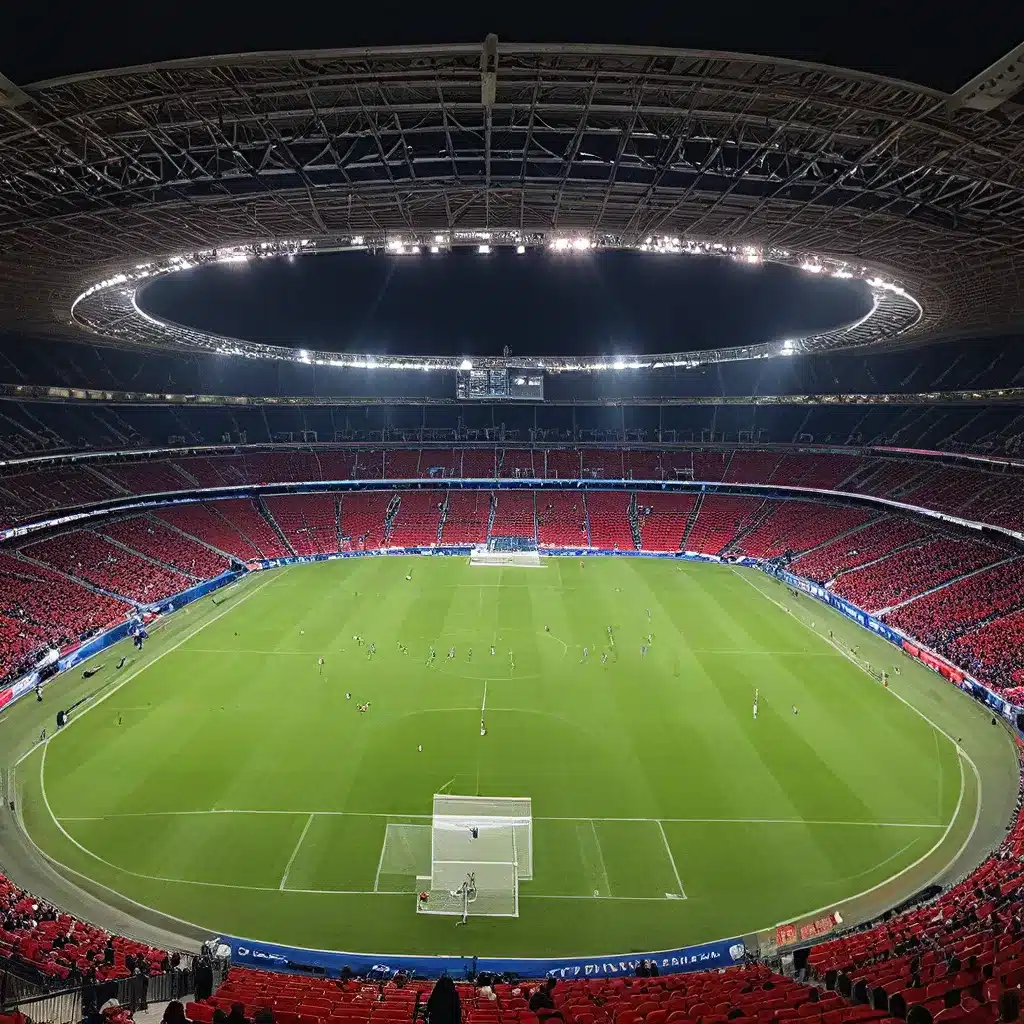
The Iconic Parisian Stadium
The Parc des Princes is a renowned football stadium located in the heart of Paris, France. As the home ground of the prestigious Paris Saint-Germain Football Club (PSG), this iconic venue has long been revered as a symbol of Parisian sporting excellence and cultural identity.
Nestled in the 16th arrondissement of the city, the Parc des Princes has a rich history that stretches back over a century. Originally built in 1897, the stadium has undergone numerous renovations and expansions to keep pace with the evolving demands of modern football. Today, it stands as a testament to the city’s unwavering passion for the beautiful game, captivating both local and international audiences with its unique blend of history, architecture, and world-class football.
A Storied Past and Evolving Legacy
The origins of the Parc des Princes can be traced back to the late 19th century when the Société Anonyme des Terrains de Jeux (SATJ) acquired the land and constructed the original stadium. The name “Parc des Princes” was derived from the nearby Porte des Princes, a historic gate that once stood on the site.
Early records suggest that the stadium was primarily used for horse racing and other equestrian events in its early years. However, the growing popularity of football in France soon saw the Parc des Princes become a hub for the nation’s emerging football clubs.
In the 1920s, the stadium underwent its first major renovation, which included the addition of a concrete grandstand and the expansion of the pitch to meet the standards of the time. This set the stage for the Parc des Princes to become a crucial venue for the French national team, as well as the home ground for various Parisian clubs.
The stadium’s stature and significance continued to grow in the decades that followed. It hosted several matches during the 1938 FIFA World Cup, including the famous semifinal between Brazil and Italy. The Parc des Princes also served as a venue for the 1960 European Nations’ Cup, further cementing its place in European football history.
A Landmark of Parisian Sports and Culture
The Parc des Princes has long been more than just a football stadium; it is a landmark of Parisian sports and culture. The stadium’s unique architecture, with its distinctive oval shape and striking concrete stands, has become an iconic feature of the city’s skyline. The impressive capacity of over 47,000 spectators has allowed the Parc des Princes to host some of the most thrilling and memorable matches in French and European football history.
Beyond its sporting legacy, the Parc des Princes has also played a significant role in the cultural fabric of Paris. The stadium has been the setting for countless celebrations, concerts, and events that have captured the imagination of both Parisians and visitors from around the world.
One of the most notable cultural moments in the Parc des Princes’ history was the series of concerts held by the legendary musician Prince in the 1990s. The “Purple One” famously graced the stage of the Parc des Princes, captivating audiences with his unparalleled musicianship and electrifying performances. These iconic shows cemented the stadium’s reputation as a versatile and culturally significant venue, transcending the boundaries of just sports.
The Passion and Pride of Paris Saint-Germain
While the Parc des Princes has a rich history that extends far beyond any single team, it is undoubtedly the home of the renowned Paris Saint-Germain Football Club (PSG). Since the club’s inception in 1970, the Parc des Princes has been the beating heart of PSG’s footballing empire, serving as the stage for their many triumphs and the embodiment of the city’s unwavering passion for the sport.
The stadium’s close association with PSG has only intensified in recent decades, as the club has risen to become one of the most dominant forces in European football. The Parc des Princes has witnessed the exploits of countless world-class players, from the legendary Zlatan Ibrahimović to the current superstars like Kylian Mbappé and Lionel Messi. Each match at the stadium is a celebration of Parisian pride, with the passionate supporters creating an electric atmosphere that is unrivaled in the world of football.
A Vision for the Future
As the Parc des Princes continues to evolve, the stadium’s custodians are committed to maintaining its status as a global icon of football and Parisian culture. Ongoing renovations and upgrades have focused on enhancing the fan experience, improving accessibility, and modernizing the facilities to meet the demands of the 21st century.
The Parc des Princes’ journey as a premier football destination is far from over, with plans in place to further expand the stadium’s capacity and solidify its position as one of the most sought-after venues in the world. Whether it’s hosting international tournaments, legendary concerts, or the continued dominance of Paris Saint-Germain, the Parc des Princes is poised to remain a symbol of Parisian perfection for generations to come.
Conclusion
The Parc des Princes is a stadium that transcends the boundaries of sport, serving as a testament to the enduring passion and cultural identity of Paris. From its humble origins as an equestrian venue to its current status as a world-renowned football stadium and cultural hub, the Parc des Princes has evolved and adapted to the changing times, always remaining at the heart of the city’s sporting and artistic landscape.
As the home of the iconic Paris Saint-Germain Football Club and a stage for some of the most electrifying moments in football history, the Parc des Princes continues to captivate audiences around the world. Its unique blend of history, architecture, and the unwavering spirit of the Parisian faithful make it a truly one-of-a-kind stadium that embodies the very essence of the City of Light.

